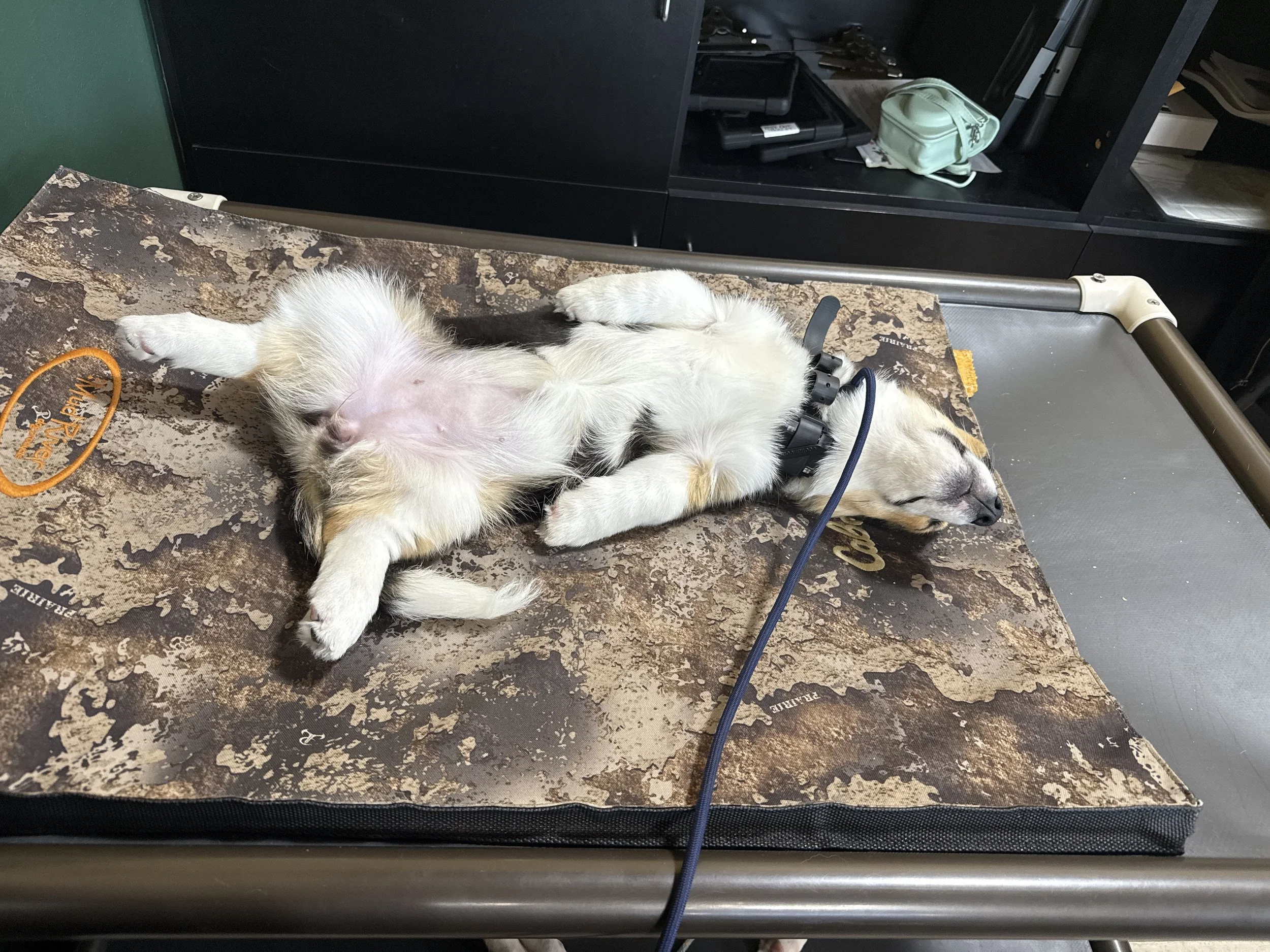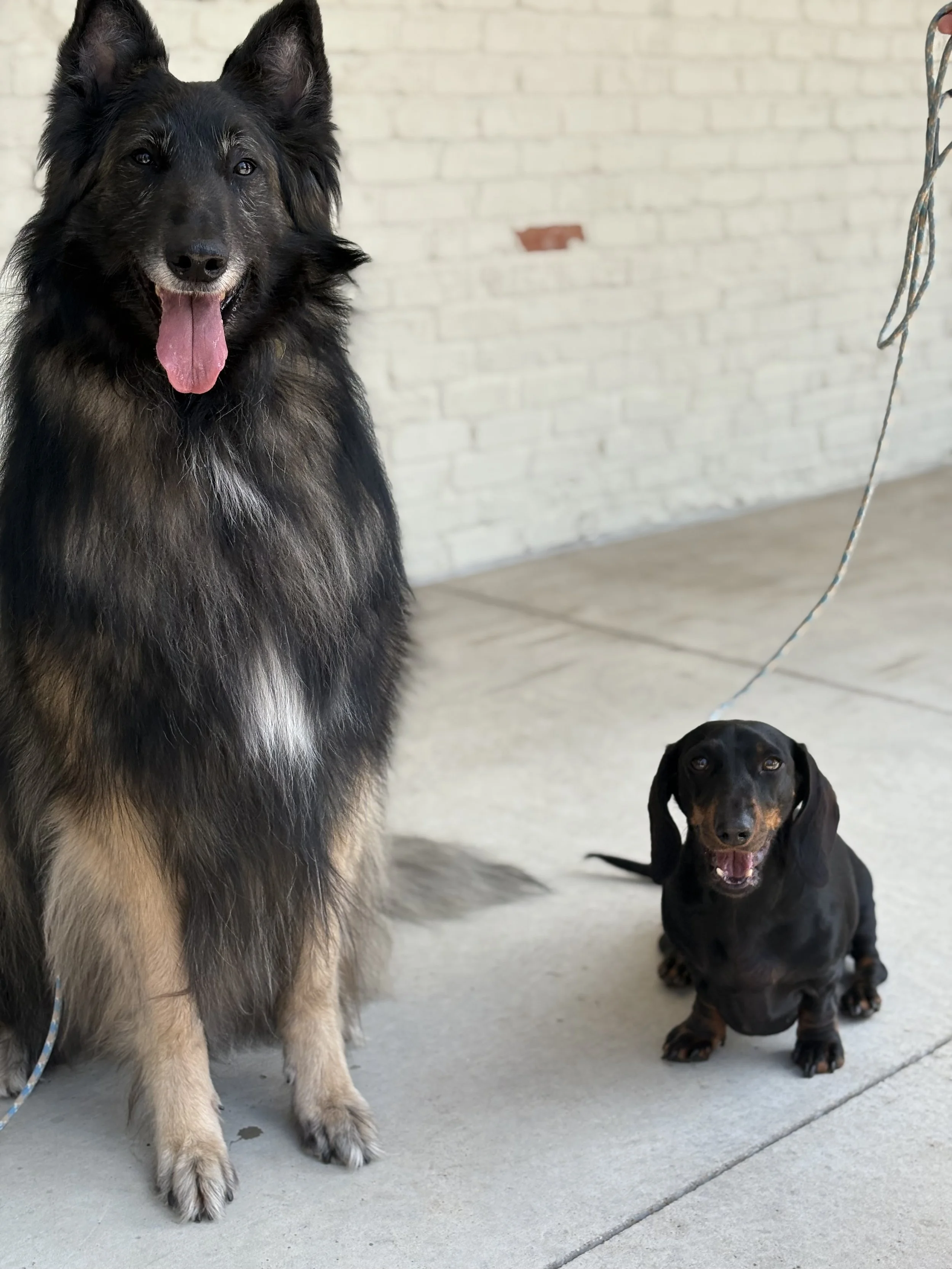Why Teaching Your Dog to Be Comfortable Alone is the Key to a Happier Life Together
Teaching Your Dog to Be Comfortable When You’re Apart
Separation anxiety is one of the most common challenges owners face — especially with rescue dogs and young puppies. It’s easy to forget that in the dog’s natural world, they rarely choose to be away from their pack. When we bring them into our human routines, separation becomes part of their reality, and without guidance, it can feel scary for them.
If we don’t teach our dogs how to calmly be apart from us, the result is often panic — barking, whining, pacing, chewing, or even attempts to escape. For us humans, it’s heartbreaking to watch. We love our dogs deeply, so seeing them in distress can make us want to avoid leaving them alone at all. But that avoidance can make the problem worse.
Why Early Separation Practice Matters
Helping your dog feel confident when you’re away isn’t about being “mean” or “cold” — it’s about giving them an important life skill. A dog that can rest calmly while you’re gone is less stressed, more confident, and easier to include in your daily life. Whether it’s going to a café patio, visiting friends, or traveling, a dog who knows how to self-soothe and wait patiently is a joy to live with.
The Myth of Constant Stimulation
Many owners believe their dog needs to be mentally and physically engaged at all times — endless games, constant training sessions, non-stop walks, and toys on rotation. While enrichment is valuable, overdoing it can backfire.
When we keep our dogs in a state of constant stimulation, we inadvertently teach them to always be “on.” They learn to expect something exciting at every moment, which means they never truly relax. Instead of a calm, neutral state, their baseline becomes alertness and anticipation.
Teaching your dog that it’s rewarding to relax — to settle in quietly without needing your attention — is just as important as teaching them to come when called or walk politely on a leash. These skills build the foundation for healthy independence and make separation much easier.
Practical Ways to Build Comfort With Separation
One of the simplest tools for teaching this skill is the kennel (crate). When used humanely, the kennel isn’t a punishment — it’s a safe, cozy den where your dog can relax. The trick is to start small and make it positive. We like to use the Kennel, Potty, Work, Play model when we’re teaching a dog to be comfortable in the kennel. If your dog isn’t out to potty, work, or actively play with you, then they’re in the kennel for a break.
Look for natural moments in your day to practice:
Taking a shower
Walking to the mailbox
Mowing the lawn
Bringing in groceries
These short absences are perfect opportunities to put your dog in their kennel for a few minutes, give them a safe chew or treat, and let them see that you always come back. Over time, you can gradually extend the duration.
Another great tool is a place command — teaching your dog to settle in a designated spot like a bed or mat. You can be on the couch reading or watching a movie while your dog relaxes across the room with a bone. This builds independence while still allowing them to feel safe in your presence.
The Goal: A Happy, Confident Dog
When your dog learns to be content on their own, they’re less likely to develop anxiety-driven behaviors, and you’ll both enjoy more freedom. You’ll have the peace of mind knowing they can be calm and relaxed when you need to step away, and they’ll have the security of knowing you always return.
Teaching separation is really an act of love — it’s a gift that allows your dog to move through the world with confidence, whether you’re right by their side or not.



